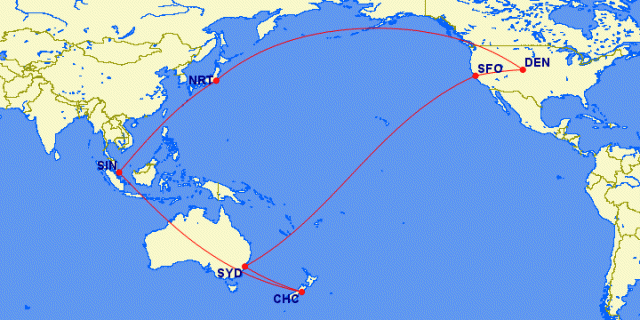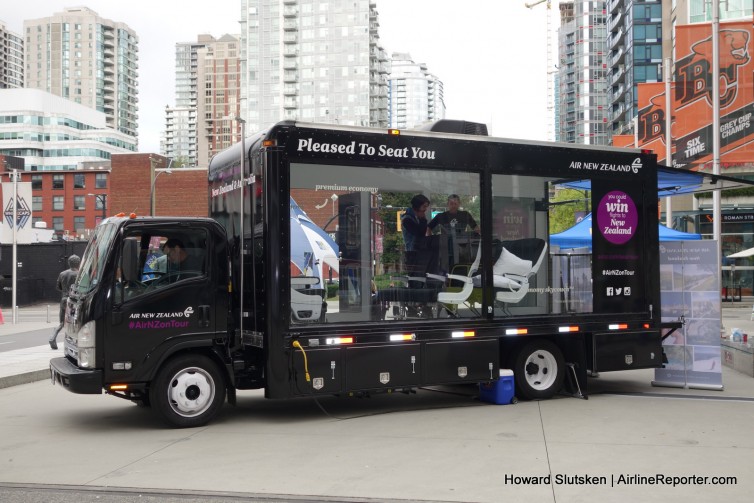
Air New Zealand’s “Pleased to Seat You” truck on display in Terry Fox Square in Vancouver
Air New Zealand is in the midst of refurbishing its Boeing 777-200ER fleet, and is showcasing the planes’ new Premium Economy and Economy Skycouch seats during a North American ’œPleased to Seat You’ tour.
The seats are on display in a 26 foot, 5 ton, glass-walled truck that will cover more than 7,000 miles, giving the public a chance to see and sit in the -200’s new seats. The airline introduced the innovative Skycouch in its Boeing 777-300s ’“ the footrest in a row of three seats can be positioned at the same height as the seat cushions, giving a flexible space for passengers.
With the update of the -200s, all of the long-haul aircraft in Air New Zealand’s fleet will include the Skycouch, along with the new Premium Economy seats also found in its Boeing 787-9s.
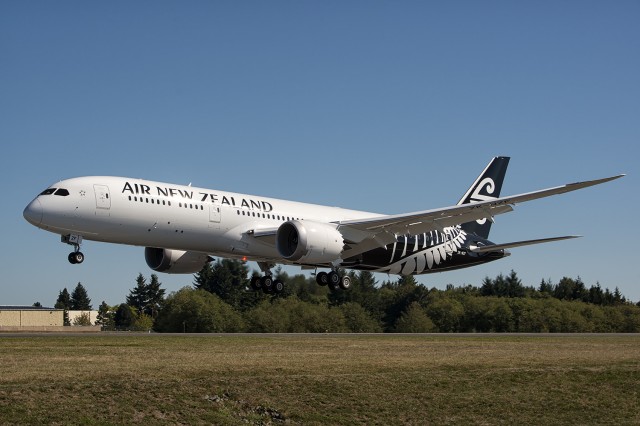
Air New Zealand Boeing 787-9 Dreamliner ZK-NZF – Photo: Kris Hull
Air New Zealand on Thursday announced a North American expansion, adding Houston George Bush Intercontinental Airport as their fourth U.S. destination. Air New Zealand currently serves Los Angeles, San Francisco, and Honolulu, in addition to Vancouver, Canada to the north.
BONUS: Flying Like a Boss in Air New Zealand’s Business Premier Seat
Service to Auckland was long-sought by Houston; Continental Airlines (prior to their merger with United) had announced service in 2010, only to cancel the service in 2012 prior to introduction. That said, the route likely makes good sense for Air New Zealand, given their status as a member of the Star Alliance. United’s giant presence at their Houston hub will allow for significant feed to the Air New Zealand flight, along with smooth connections for inbound travelers to the U.S. east coast and Latin America.
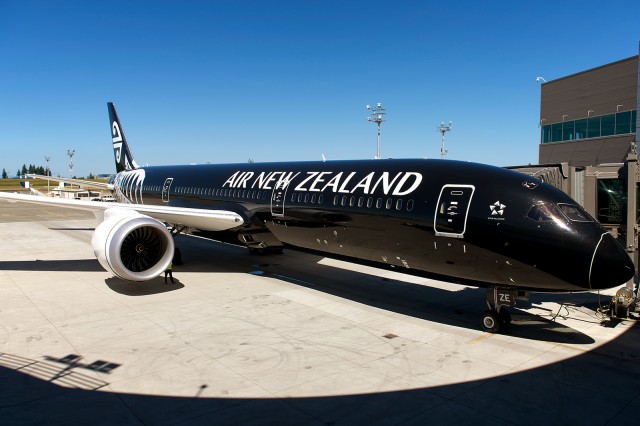
ZK-NZE, Air New Zealand’s first 787 at the Everett Delivery Center. It took 92.5 gallons of paint to create this special livery. Photo – Bernie Leighton | AirlineReporter
This morning I was able to take part in a Boeing media event involving a much heralded aircraft: Air New Zealand’s first 787-9. We’ve discussed what the cabin will look like before on the site, but it’s a lot different to see- and feel- it in person.
The tour commenced by taking a look around the airframe outside, but with the caveat that we had to stay within the gate lines of the delivery stall. This meant that I had to get creative with my angles. We could, however, also make use of the balcony of the Everett Delivery Center, which provided some great views.
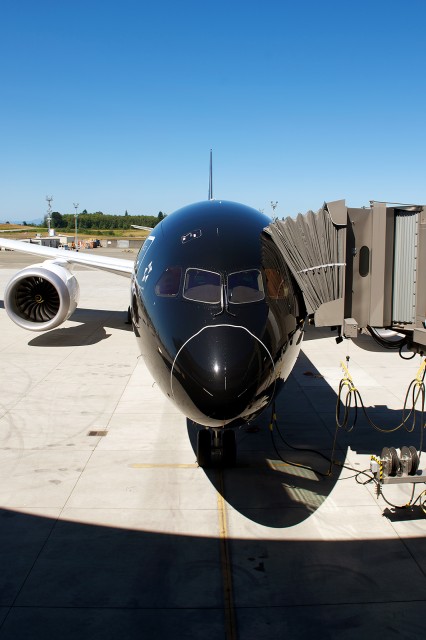
Windscreen-level with a 787-9. Photo – Bernie Leighton |AirlineReporter
The outside of this plane is amazing, but I was mostly there to check out what was on in the inside. After getting external shots, it was time to head onboard Air New Zealand’s brand new aircraft. A special moment for me as I’ve never even set foot inside a 787 Dreamliner of any flavor before.
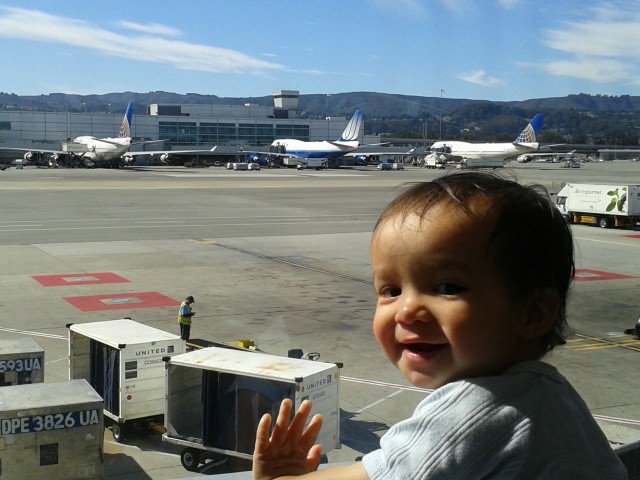
Start ’em early! Author’s son planespotting at SFO. Photo: David Delagarza
’œThat’s insane.’ That seemed to be the reaction most people, many of whom were seasoned fliers, had to our plan. My wife and I had schemed it up over a year ago while she was pregnant with our first child. We had always enjoyed traveling, and I had gotten into collecting miles and points when we found out that we would be adding a baby to the mix. We didn’t want to stop traveling once the baby was born, so we booked one of the most ambitious itineraries we could think of – flying to New Zealand, with stopovers in Japan and Australia. And, yes, we would be taking the baby with us.
11 months prior to the trip, we had the miles saved up. We had accumulated enough to book the trip in business class (at least prior to the recent United Airlines MileagePlus devaluation.) After diligently researching and waiting for availability to open up, I finally found a business class route that would work – at least until I saw the infant fare. United charges 10% of the cabin fare for lap infants on international flights. For economy cabins, this can add up to a couple hundred dollars. However, for the premium cabins, we were looking at paying nearly $1,000 each way. Although I did briefly consider footing that bill, we decided to go in economy and use the extra miles to put our son in his own seat (when we could find the award space) and stay in some nicer hotels along the way.
Our outbound itinerary ended up beginning with Denver to Tokyo Narita on United’s 787 Dreamliner. We had a 20-hour overnight stopover before continuing onto Singapore aboard Singapore Airlines’ A380. The final leg took us from Singapore to Christchurch, New Zealand on Singapore’s 777-220ER. 50 hours, four countries, and 14,000 miles just to get there.
Our return trip was a bit easier – Christchurch to Sydney on an Air New Zealand A320, followed by a 23-hour stopover in Sydney before continuing onto San Francisco on a United 747-400, connecting to Denver on a United A319. The only hitch was that I was unable to find any kind of routing that made sense for the return trip once my son was born, so he was going to fly home as a lap infant. It was sure to be quite the adventure.
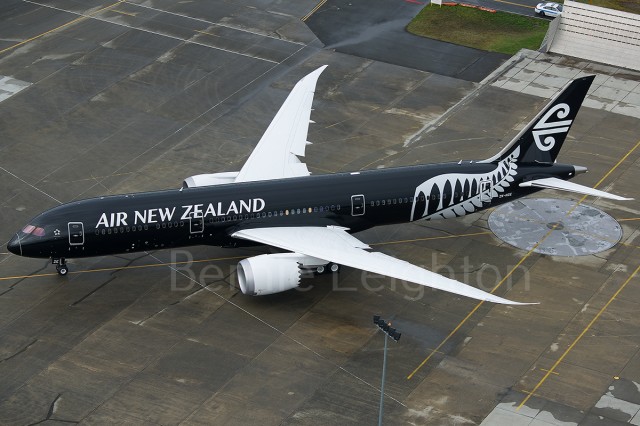
ZK-NZE on the Boeing compass rose at KPAE – Photo: Bernie Leighton | AirlineReporter
What beats a photograph on the ground of Air New Zealand’s first Boeing 787-9 Dreamliner in “All Blacks” style livery? One from the air, when it is not pouring rain.
The first ANZ 787-9 was rolled out of the paint hangar to a dark and rainy night, making it a bit difficult to see. This morning provides a bit better opportunity to highlight this unique black livery design — especially when viewed from a helicopter.
“It’s great to see the Koru and the beautiful New Zealand fern emblazoned on this aircraft. This will soon be the first 787-9 aircraft anywhere in the world to operate commercially and I think it will instill a sense of pride in Kiwis and turn heads when it touches down at airports throughout Asia and the Pacific,” said Capt. David Morgan, Air New Zealand Chief Flight Operations and Safety Officer.
Their first 787-9 to be delivered will sport this black design, while the white version of this same design has already started to be incorporated into the fleet.






